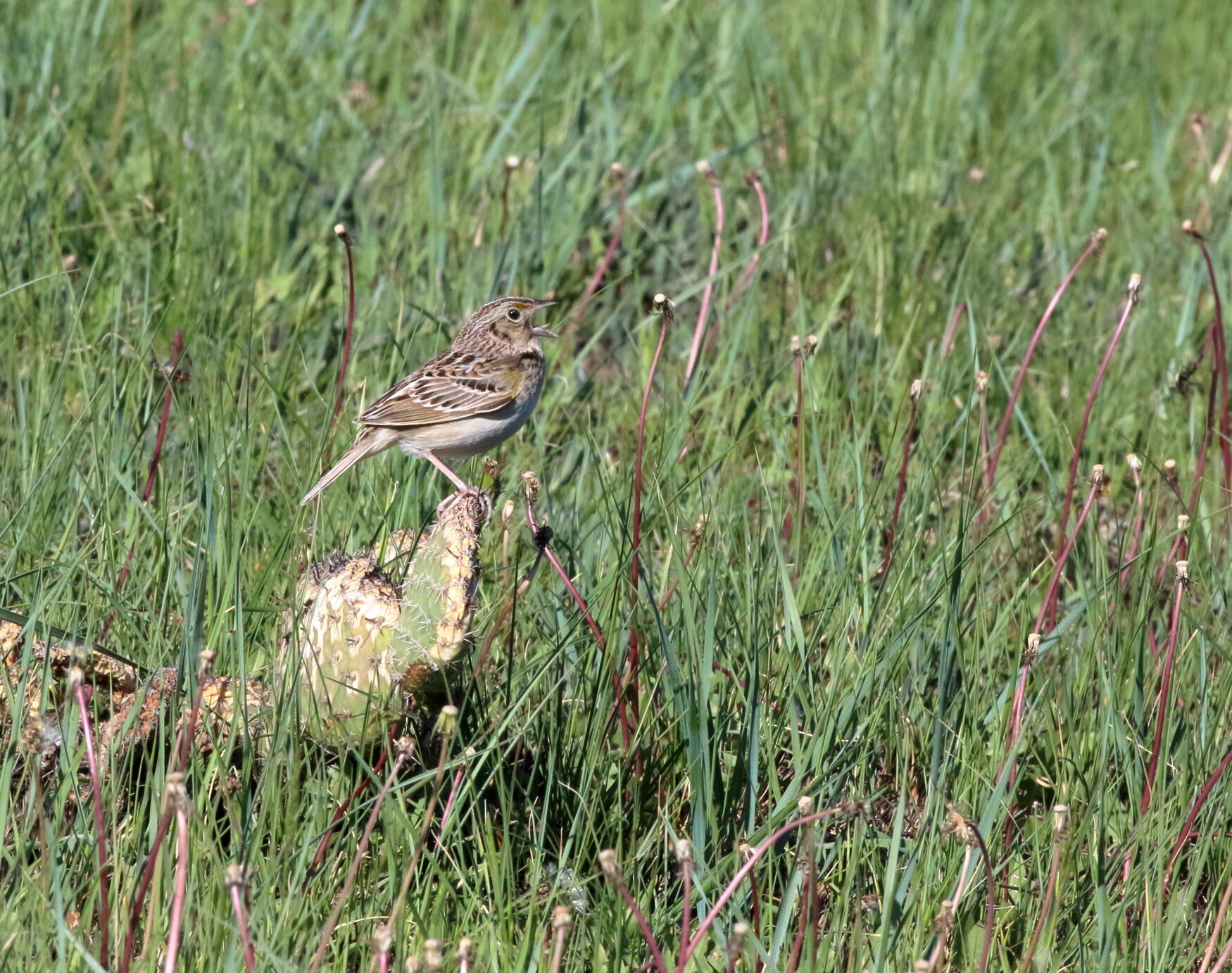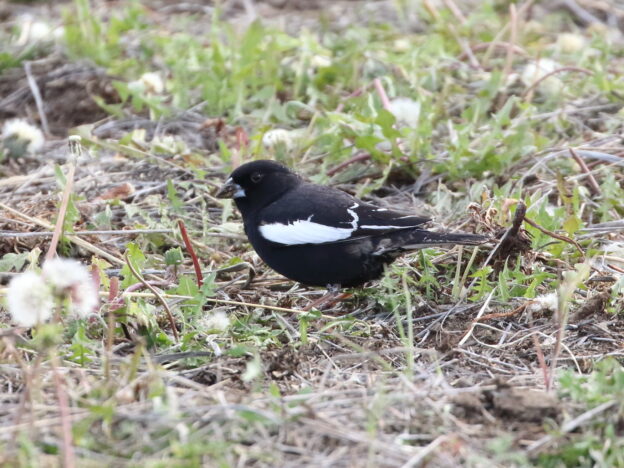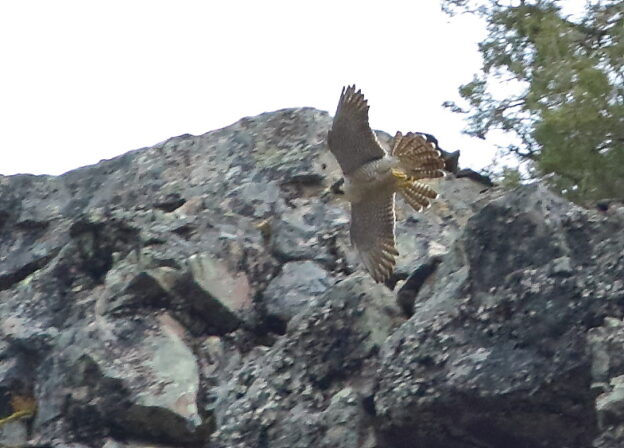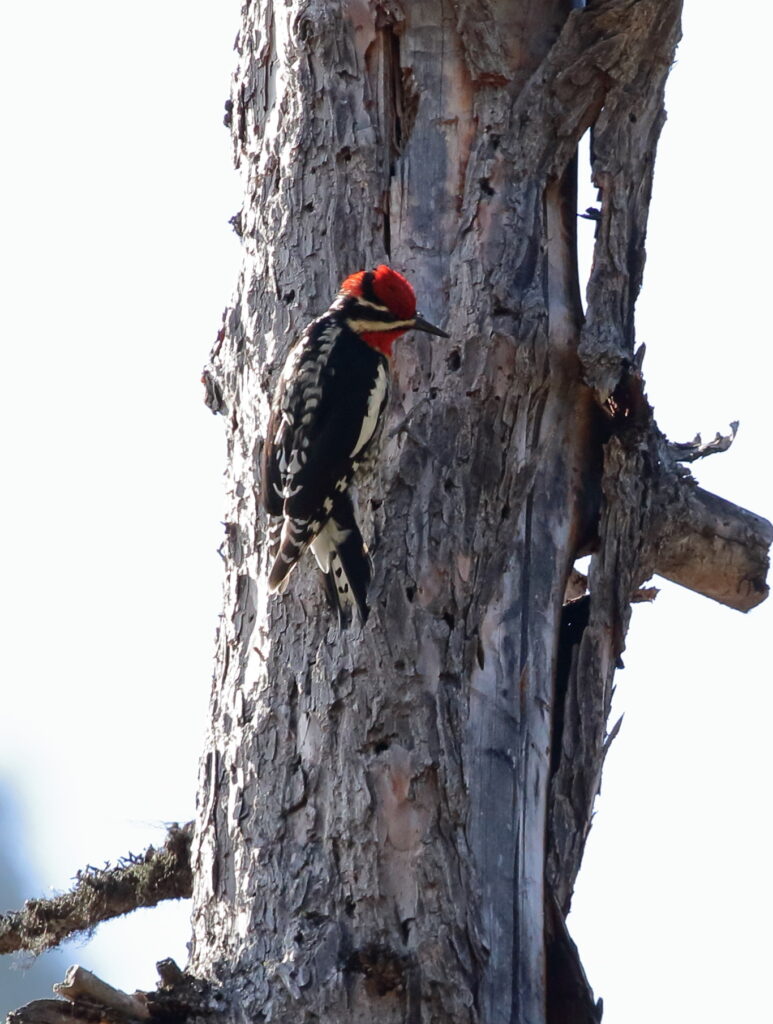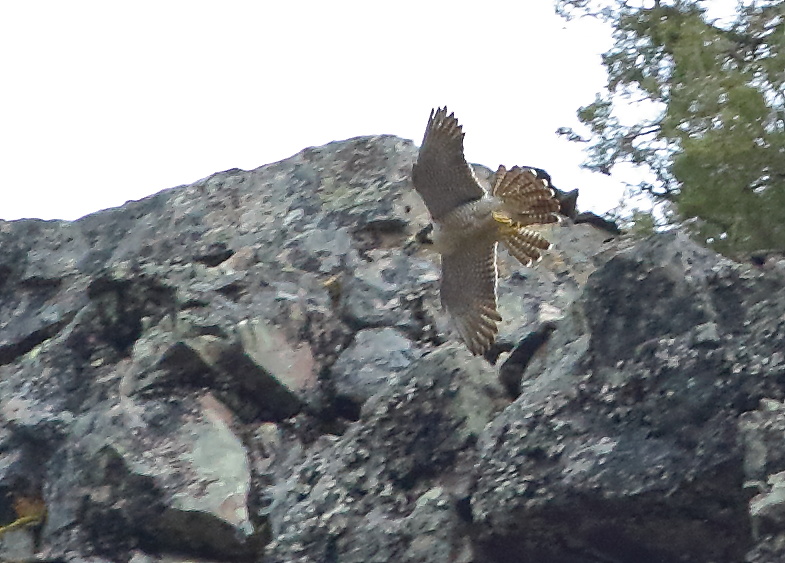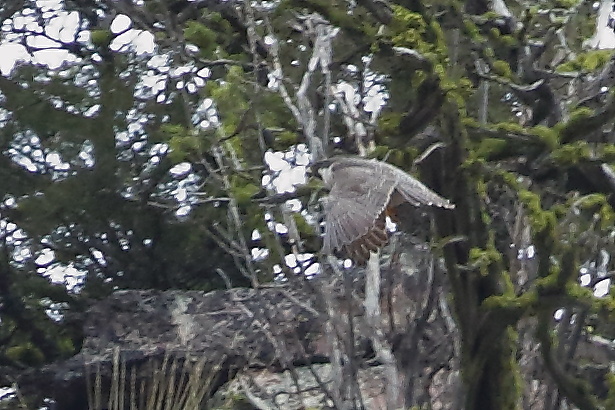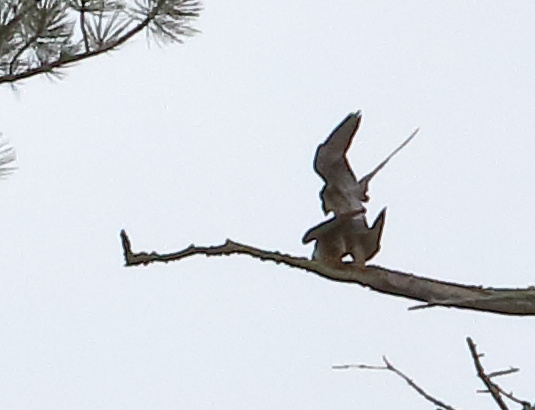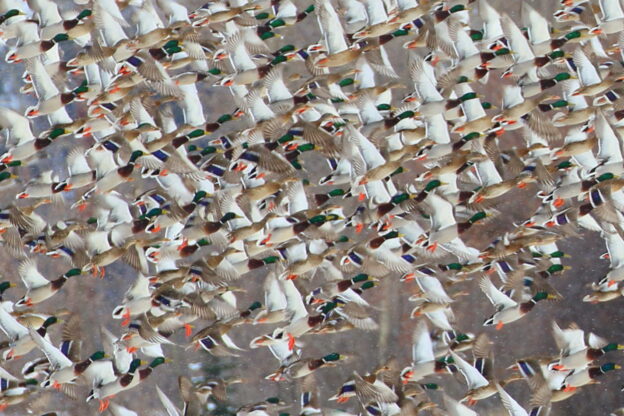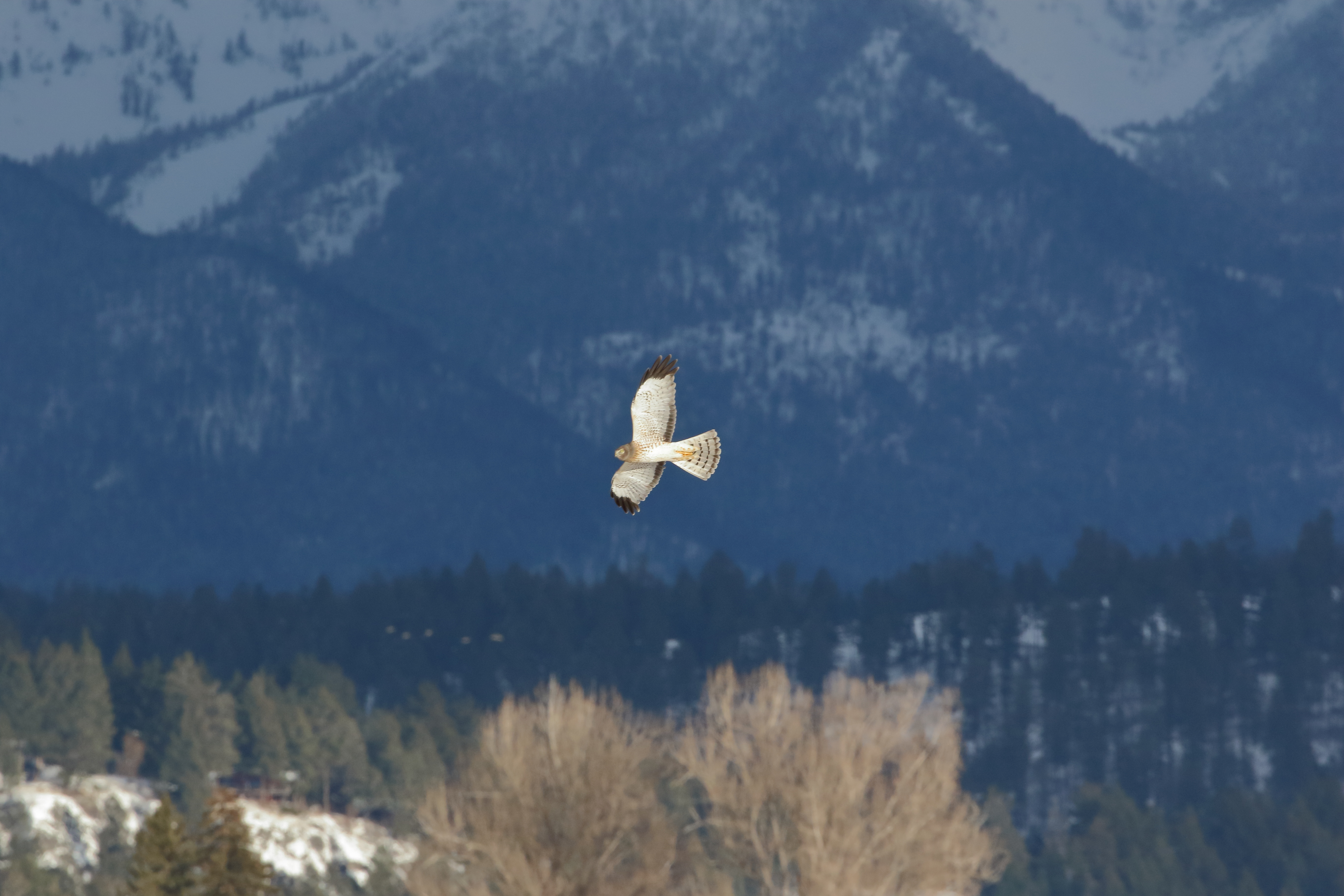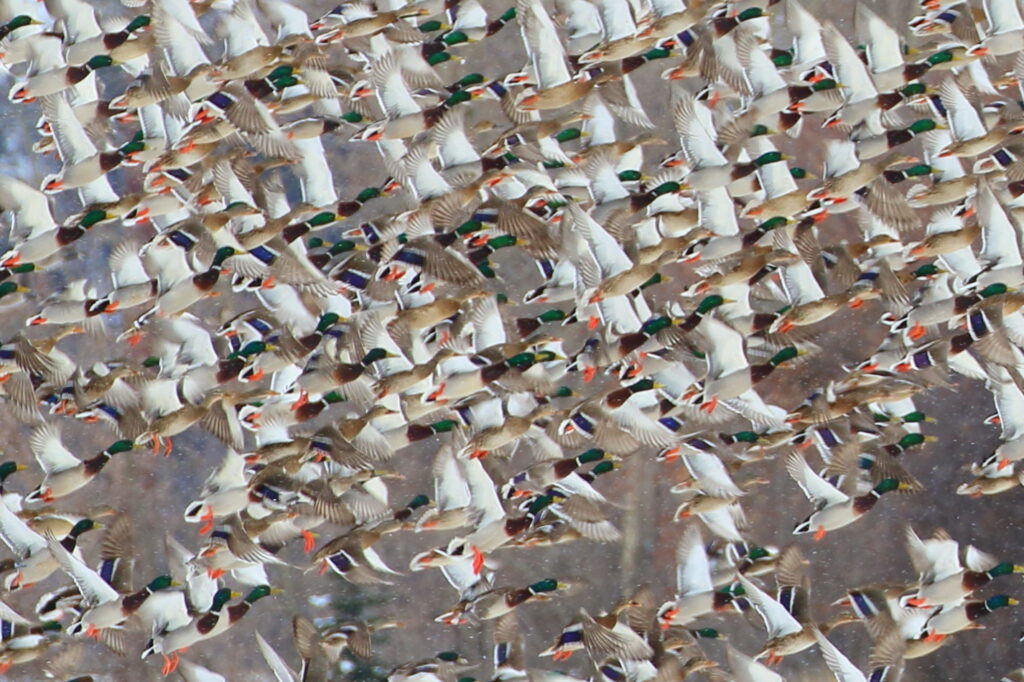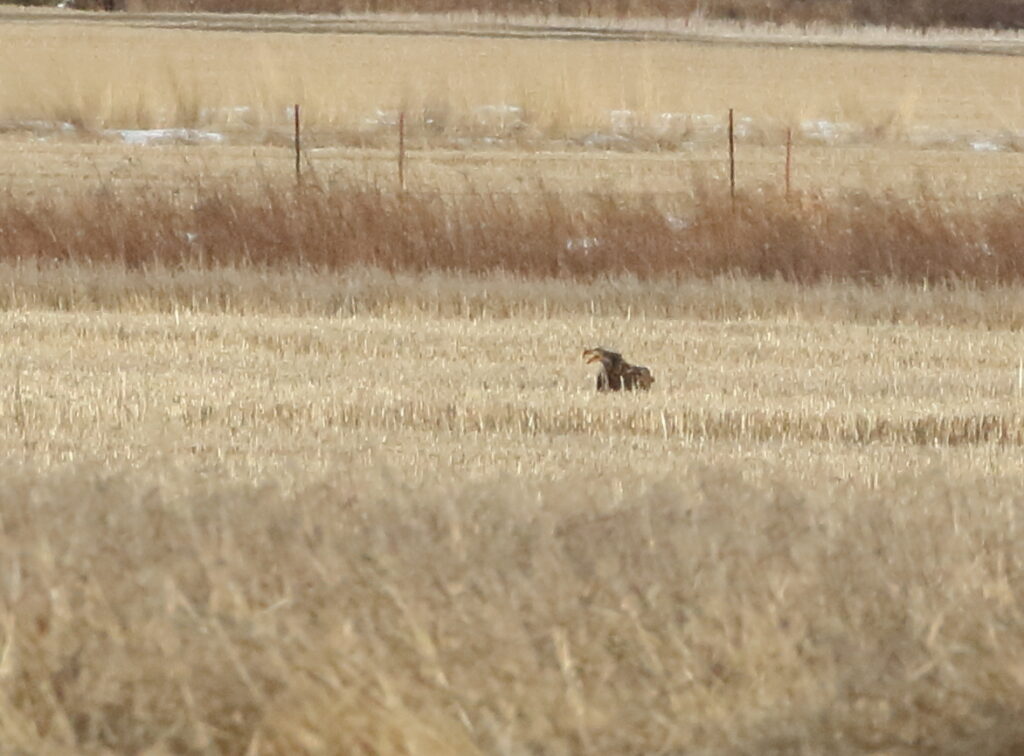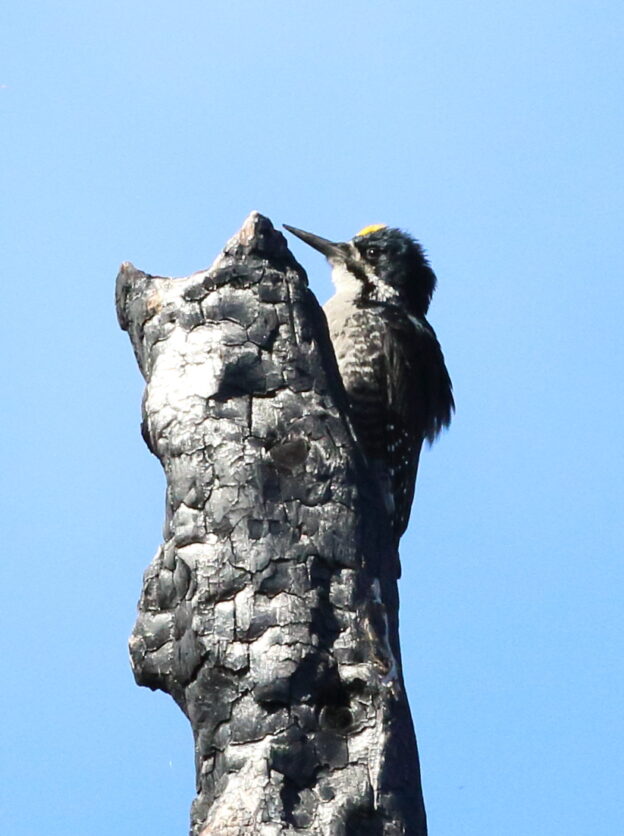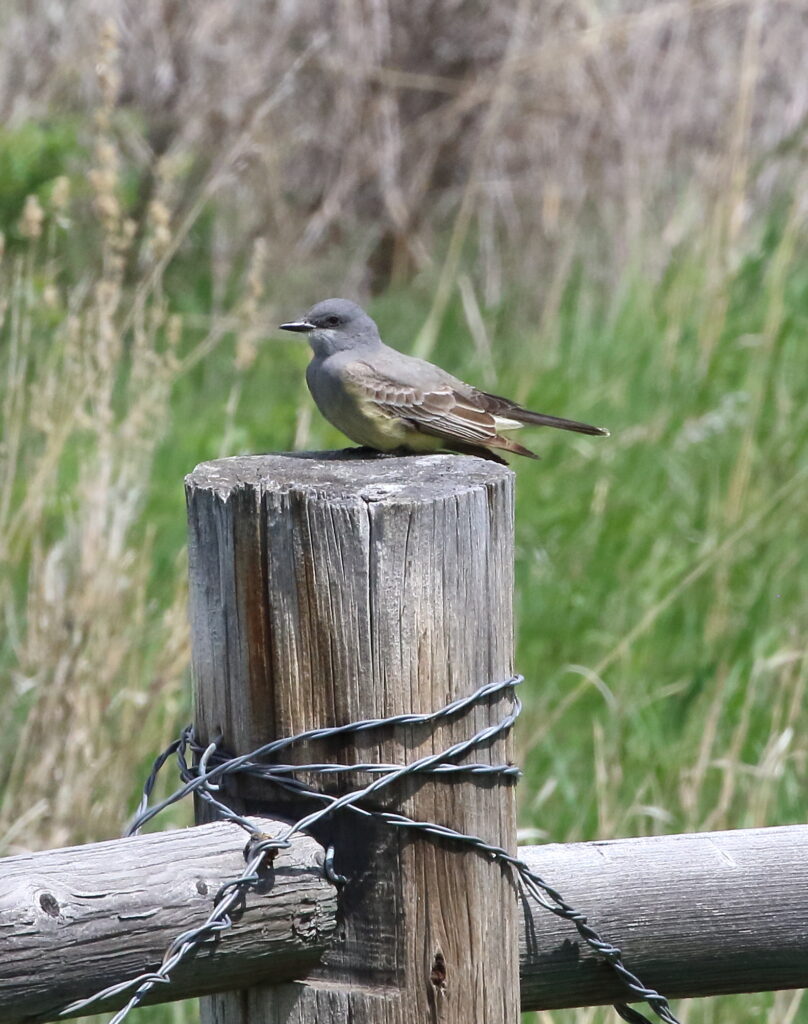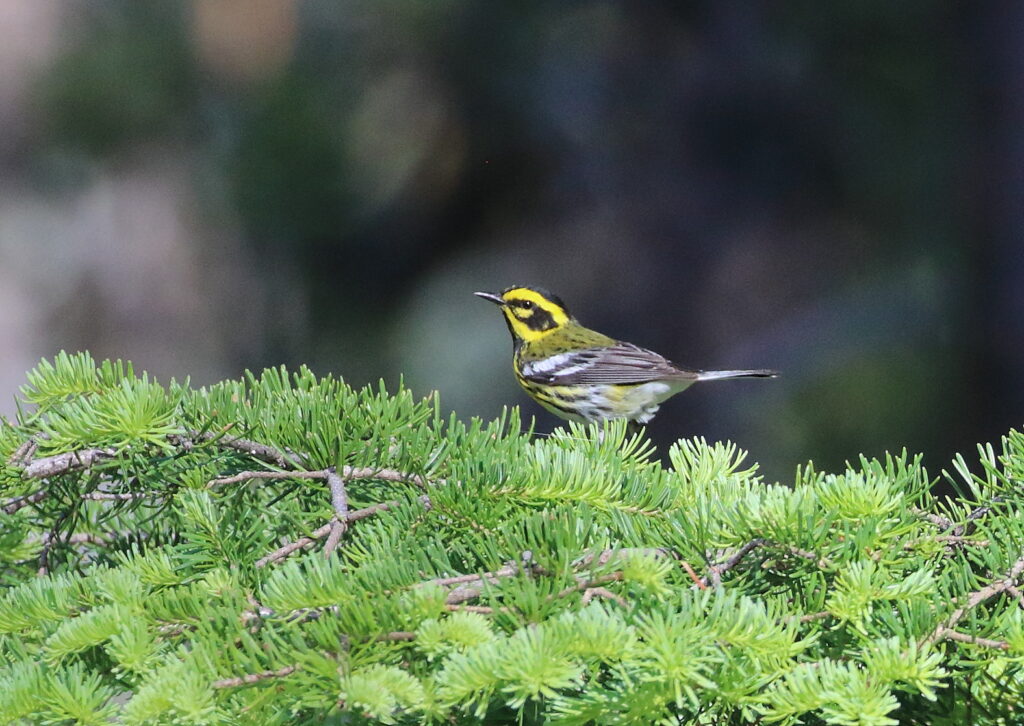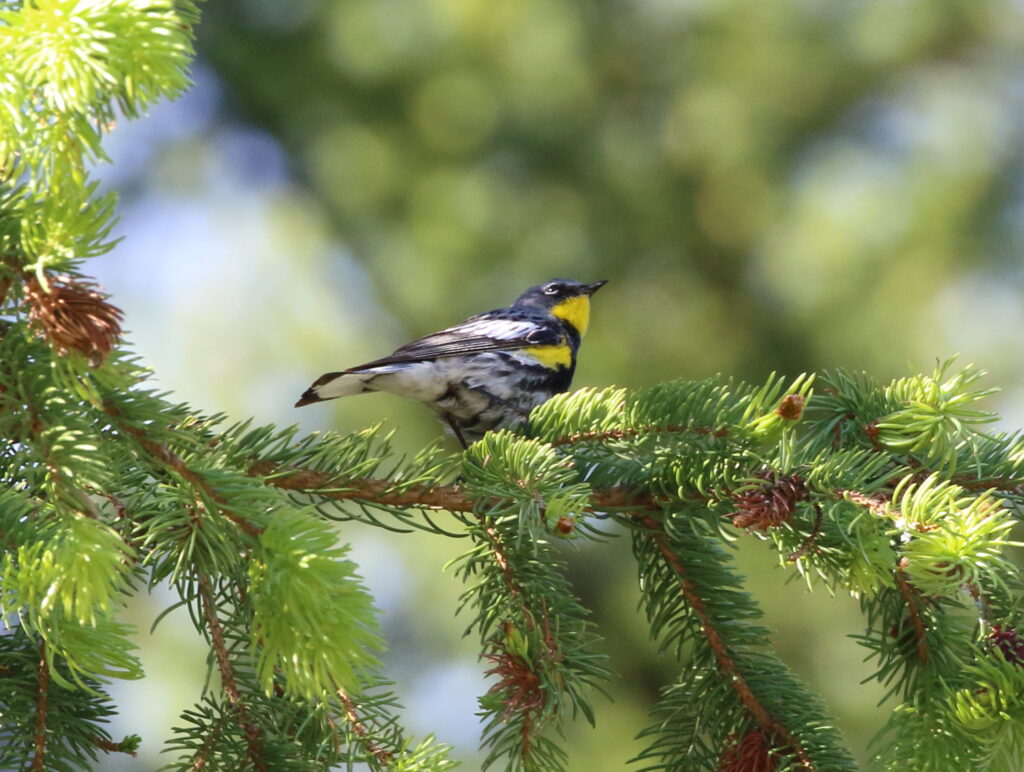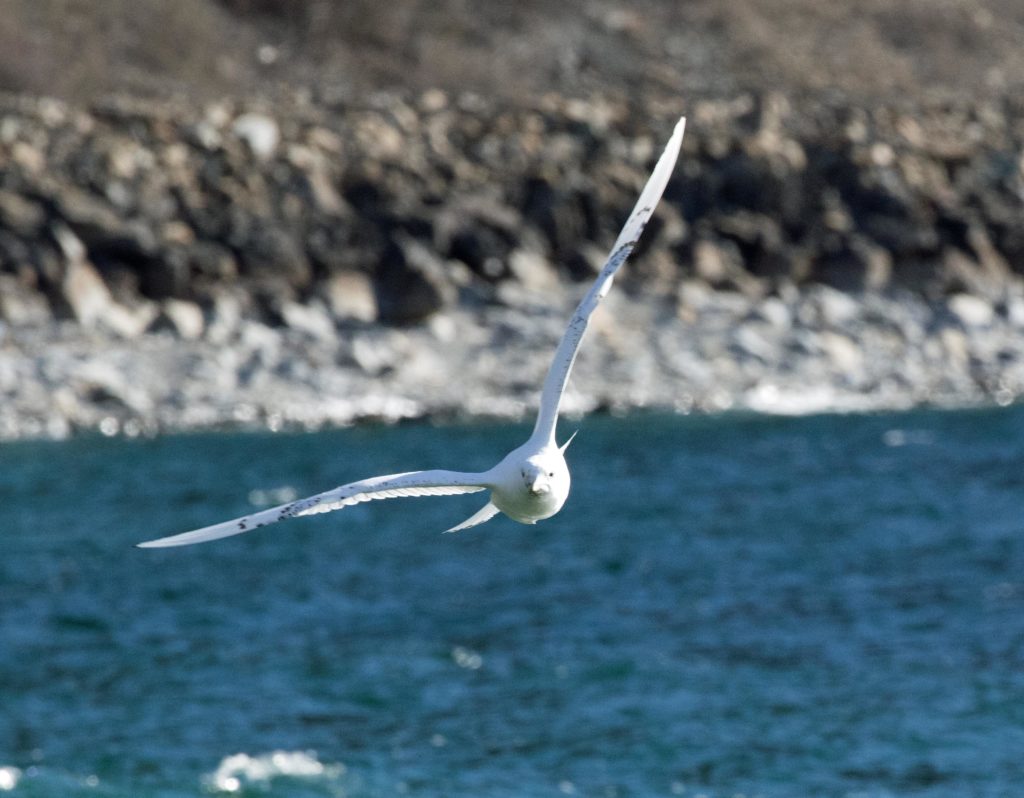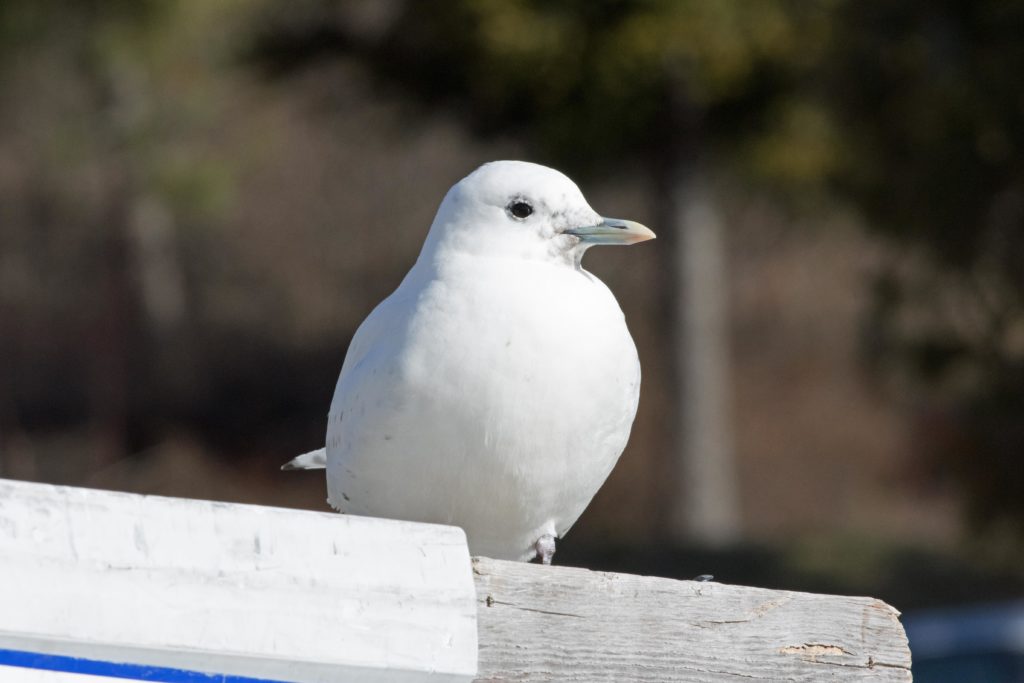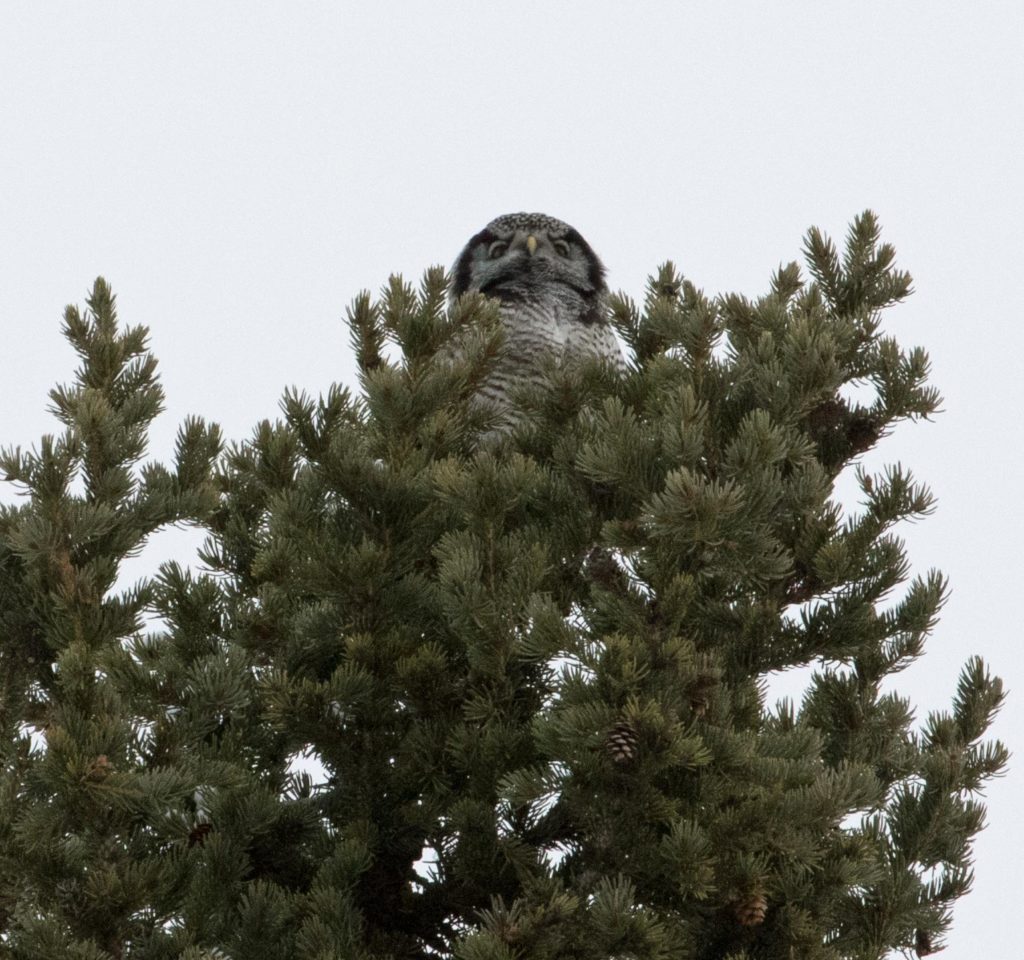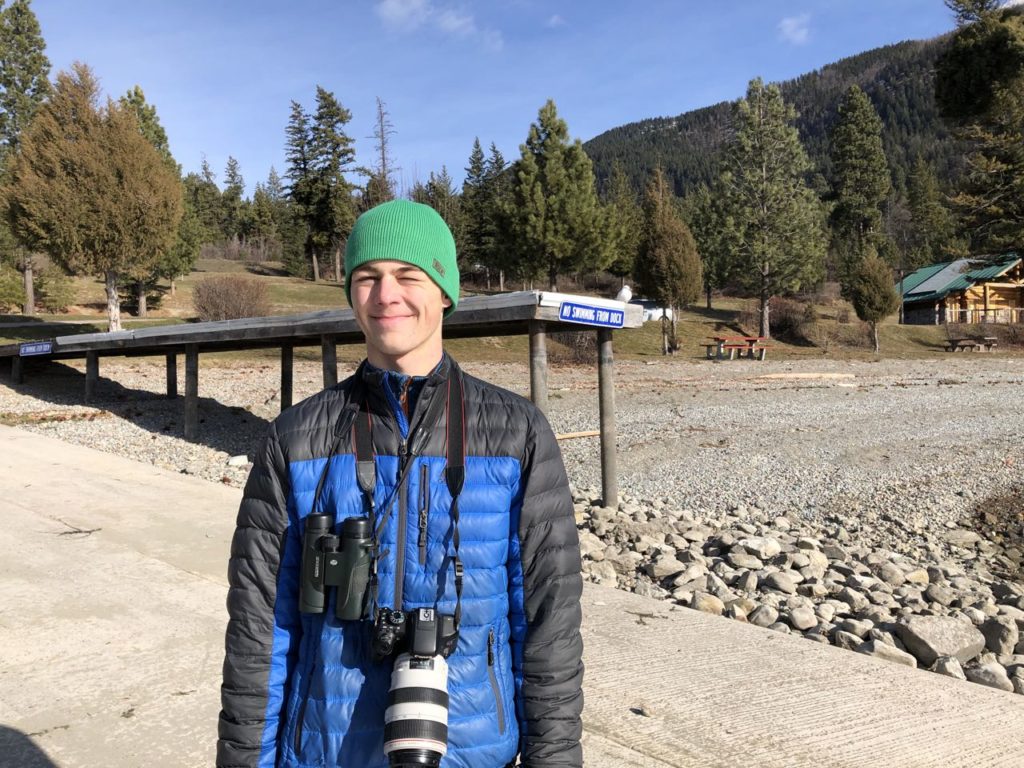Please share this post. Prairie birds will thank you!
After our Montana Big Year last year, Braden and I opted not to simply chase a high species count this year. In 2021 we decided to a) explore new places b) find some new Life Birds and c) revisit favorite birds we’d spent time with before. When we set off on our five-day central Montana trip last week, however, neither of us realized what a rich grasslands experience we would encounter.
It began with an almost mandatory annual pilgrimage to Benton Lake NWR. We both tend to think of Benton as a place full of ducks, grebes, and other waterfowl—including a dependable pair of Black-crowned Night Herons—and we found these birds in abundance. Immediately upon entering the refuge, however, I hit the brakes for an unexpected surprise: a pocket of four Upland Sandpipers! While not rare, these ungainly-looking dinosaur holdovers always delight us, and to see four together constituted a birding bonanza. What’s more, we found three more UPSAs at Benton, along with the other great grasslands shorebirds Long-billed Curlews, Willets, and a lone Marbled Godwit.



Clockwise from above: Upland Sandpiper, Long-billed Curlew, & Willet
Our day had just begun, however, as we decided to try to find Stilt Sandpipers at a fairly isolated lake north of Grass Range. Again, we found the sandpipers, which were hanging out with at least nine Bald Eagles, but it was the grassland birds along the dirt roads that most impressed us. These included four more Upland Sandpipers, Western Meadowlarks, Eastern & Western Kingbirds, Lark Buntings, and at least four other kinds of sparrows. One of these was a drab bird Braden never expected to see on our trip—Brewer’s Sparrow. Though we were well within its range, we’d never found one in this area, which just shows how much you can discover if you get off the beaten birding path!
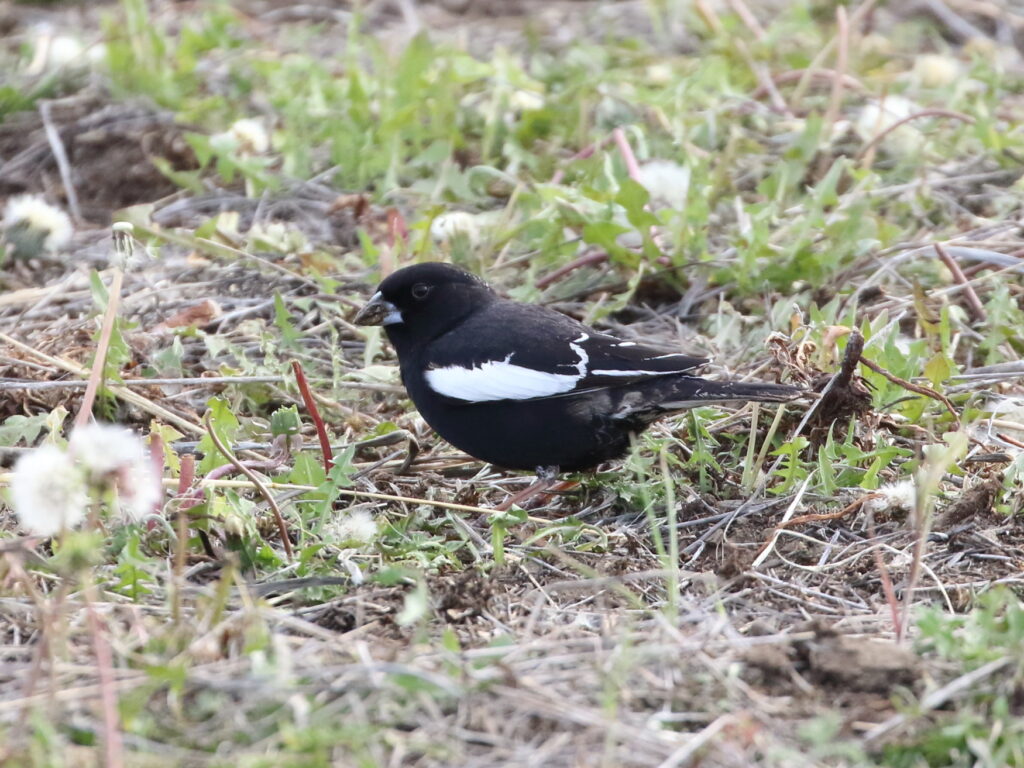
As we were approaching a left turn, I suddenly stopped and whispered “Look ahead.” About twenty yards in front of the car stood a Sharp-tailed Grouse—one of six we found on this particular route. Not only that, it posed beautifully giving us by far our best looks ever at this species. This species helped compensate for our miss on Mountain Plover, an unfortunately uncommon species extirpated from most grasslands by habitat loss or modification, especially the removal of bison and prairie dogs, and the conversion of short-grass prairie to many types of agriculture. Hopefully, we’ll find one next time!
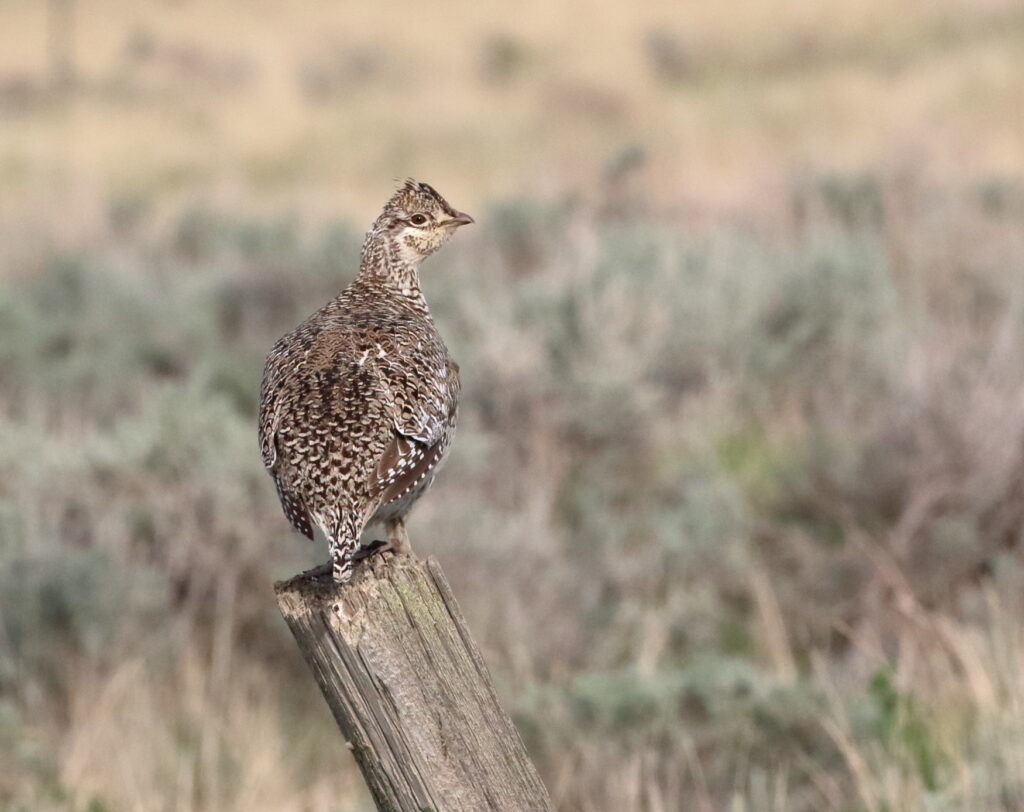
My second favorite grassland bird experience of the trip happened two days later at Bowdoin NWR, when we had a wonderful experience watching a Grasshopper Sparrow singing on top of a stubby cactus. With my crappy ears, I can no longer hear this bird, but this one decided to give me a break by posing in full view where we could watch and photograph it. Which may leave you wondering what our BEST grassland bird experience of the trip might be? I’ll let Braden tell you about that next time!
